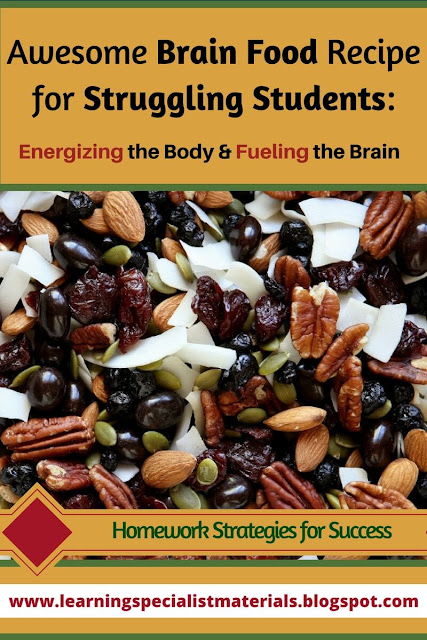This week I wanted to tell you about my online store, Good Sensory Learning. I’m Dr. Erica Warren, and I established this site so I could share all the materials that I have created over the last 20+ years as a learning specialist and educational therapist. When I first began my private practice, Learning to Learn, I had great difficulty finding fun and multisensory materials for my students that were effective and engaging. So back in 2005, I made it my mission to design and distribute high-end, remedial products as well as memorable, motivating lessons that bring delight to learning. If you would like to try a free sampling of my activities , CLICK HERE . How Are the Products Organized at Good Sensory Learning? You can download my Free Printable Catalog or you can browse the site using the grey “search all products” bar in the top right of any page with keywords such as dyslexia, working memory, and executive functioning. What’s more, drop down menus in the red banner allow you t...
One of the most important things we can teach our children is that the food that we eat plays a vital role in our health and cognition. Unfortunately, we live in a consumer society and children are constantly targeted by large companies that entice them into consuming junk foods and drinks that are void of nutrients and are packed with harmful and addictive fillers. In fact, I continually see students that have poor diets consisting of processed foods, starchy entrees and sugary snacks. Sadly, if you even suggest changing diets to healthy options, many adamantly oppose, as they are hooked to this lifestyle. You can see that they are undernourished, because their skin coloration is often pallid and pasty, they have trouble focusing their attention, many are irritable, and most are struggling at school. That’s right, when kids do not consume healthy fats, vegetables, and other whole foods, it can lead to a whole slew of physical and mental challenges.
One of my favorite ideas for these finicky eaters is to suggest that they make their own trail mix or “brain food.” This consists of organic nuts, seeds, and dried fruit that has no added sugar or starch. This is an easy snack that is high in omega-3 fatty acids that has been shown to help brain functions like memory, speaking ability, and motor skills. In addition, this tasty alternative offers high levels of protein that provides the amino acids that make up our neurotransmitters. What’s more, these fats and proteins also help to produce the myelin sheath that forms memories that aid in the learning process.
Brain food can be used to boost energy during the school day, fill empty bellies when there is no time for breakfast, and it is an ideal snack before starting homework. Before long, you will find that your kids will be sharing this healthy option with their friends!
Where Can I Get Brain Food Ingredients?
My favorite place to purchase these nutritious foods is Tierra Farms. They are a terrific, American run company that uses all organic ingredients. In addition, they have a deeply discounted wholesale option for any small business. Wholesale accounts also qualify for 3 free samples per order, and free next day shipping with order over $300.00. If you decide to use another distributor, please read the ingredients as many manufacturers use additives, sweeteners, and non-organic products.
What are Some Options?
Letting kids create their own brain food medley is a fun and motivating activity. In addition, making a large batch and placing the mixture into baggies, Tupperware bins or jars can make it a quick and convenient option.
Here are just a few options to choose from when creating your mixture.
Nuts
|
Dried Fruit
|
Seeds
|
Almonds
|
Apples rings
|
Pumpkin Seeds (Pepitas)
|
Cashews
|
Apricots
|
Apricot Kernels
|
Brazil Nuts
|
Blueberries
|
Sunflower Seeds
|
Hazelnuts
|
Cherries
|
Sesame Seeds
|
Pecans
|
Coconut flakes
| |
Macadamias
|
Cranberries (sweetened with organic apple juice)
| |
Pine Nuts
|
Dates
| |
Pistachios
|
Figs
| |
Walnuts
|
Goji berries
| |
Golden berries
| ||
Jak fruit
| ||
Mulberries
| ||
Mango
| ||
Papaya
| ||
Pineapple
| ||
Prunes
| ||
Raisins
|
Multisensory Educational Materials for Students
If you are searching for fun and multisensory educational materials, be sure to come on over to Good Sensory Learning. Learning specialists, educational therapists, teachers and parents can find lessons, remedial activities, cognitive therapy publications, educational games and more.
Cheers, Dr. Erica Warren
Dr. Erica Warren is the author, illustrator, and publisher of multisensory educational materials at Good Sensory Learning and Dyslexia Materials. She is also the director of Learning to Learn and Learning Specialist Courses.
· Blog: https://learningspecialistmaterials.blogspot.com/
· YouTube Channel: https://www.youtube.com/user/warrenerica1
· Podcast: https://godyslexia.com/
· Store: http://www.Goodsensorylearning.com/ & www.dyslexiamaterials.com
· Courses: http://www.learningspecialistcourses.com/
· Newsletter Sign-up: https://app.convertkit.com/landing_pages/69400


Comments
Post a Comment